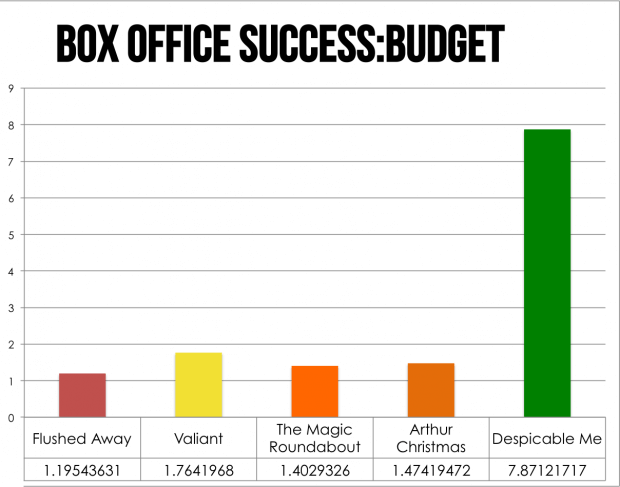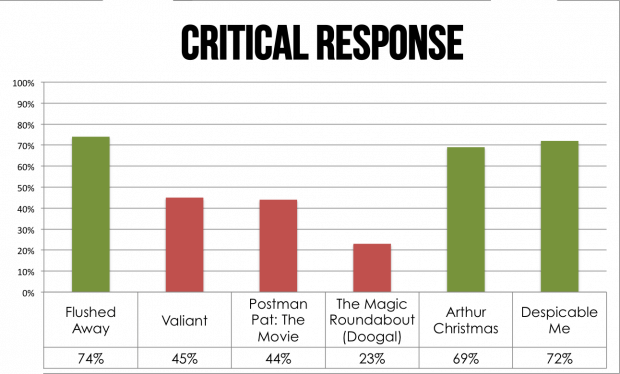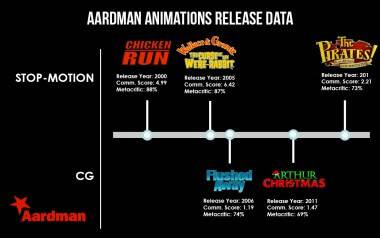Where’s OUR Toy Story?
Pixar just announced that they are making a FOURTH Toy Story which if nothing else is a testament that when they started their journey of creating CG animated feature films, it would still be paying off 20 years later. Despite the success of many CG animated films such as Toy Story and recently Despicable Me, the UK has still not managed to create a successful film that could match this level of success both commercially and critically. Why is this the case when the UK has proven itself time and time again in the CG industry through it’s television and games?
It was only last year when news broke that Sarah Smith was partnering with Double Negative and Elizabeth Murdoch to create a new CG animation studio dedicated to producing high-end animated feature films. Many UK-based CG animators probably jumped for joy at such news and a year on this news is still intriguing. What have they got cooking away behind those close doors?
When the news broke of this new studio, I looked back at the history of UK-based CG animation and gulped with nervousness and apprehension and it’s not hard to see why – our track record isn’t that great. But it doesn’t stop there. After coming to the UK, to study animation, Timothy Reckart didn’t waste much time going to back to the US to make his CG debut. Why? Because such an opportunity would never be available for at least a good 5 years in the UK. When Locksmith was announced last year, Sarah Smith said this…
“There’s a whole load of reasons right now that make it the absolutely obvious thing to do. We have visual effects houses like DNeg who are massively successful. We have tax credits. We’ve got the talent and we’ve got the children’s stories. We have the whole set. I think what Illumination is doing in Paris, we can do in London, with more stories and children’s writers’ points of view. It just felt like an unarguable case”
Smith is exactly right – why on earth can’t we?
If we analyse previous British CG Animation features. Many of them have failed either critically or commercially. I’ve created a chart to show the box office reception of British CG features and compared it to Locksmith’s target – Despicable Me. These scores have been calculated at a ratio of Budget : Box Office. Although every film is different and has different targets, a general rule of thumb is that a film must double it’s budget, and as the chart below shows – no British film does whilst Despicable Me’s result speaks for itself.

A comparison of box office success of British CG Animation Films to Despicable Me (Box office figures gathered from BoxOfficeMojo.com and TheNumbers.com. No budget information was available for Postman Pat: The Movie)
So why have our films under-performed so much at the box office? Is it because of the quality? Definitely not! No film has come close to the box office targets of Despicable Me and yet when we compare critical reviews of British CG Animation features, Flushed Away (The least successful box office film) had a HIGHER Metacritic score than Despicable Me! Whilst the majority of British CG Animation features have performed poorly critically, Aardman have proven that the high quality people are there and have been able to maintain that high standard of animation they have been known for.
So do British cinema-goers simply not have a passion for animation? Again, wrong. According to the BFI’s Statistical Yearbook, animation was the most popular genre watched in 2013. Although it does wrongly state animation as a genre and not a medium, it is still clear that the British public has a passion for animation. With only 4% of films released in 2013 being an animation, animation still managed to take 21.4% of the box office gross. Therefore, there is a clear love for animation in the UK.
So what is it? How is it possible for Aardman to have the highest commercially performing stop-motion animation film but two of the lowest performing CG Animation films? Surely, it can’t simply be a case of the medium. Especially as we’re comparing a medium that is consistently used every year with one that is occasionally used every 2 or 3 years (on the feature film side). All of Aardman’s stop-motion features have made a at least double it’s budget back however neither CG features have reached that. Although stop-motion features have been made on a much smaller budget, many other CG features have achieved the same amount of success.
One clear problem is timing. Arthur Christmas and Flushed Away were released on Thanksgiving weekend in the USA. A saturated market in such a small space of time already presents a challenge. The Magic Roundabout was released during Post-Oscar Season (a lesson the Weinstein Company still haven’t learnt from when releasing Escape From Planet Earth). Whereas Despicable Me was released during the summer. Whilst a saturated market, it is a long period of time and therefore gives space for a lot of flexibility with cinema-goers, especially children on school holidays and their parents who just need an hour and a half of peace in a darkened room.
Another problem is branding. Aardman have made a name for themselves with their unique, original way of animating. However, when they tried to transfer this USP into the CG Animation world, it causes problems. When you enter such a competitive and highly saturated market, you are better suited to showing the audience something familiar – this was lacking in Flushed Away. Aardman (or rather, Dreamworks) tried to transfer their unique stop-motion style to the computer screen and clearly, it didn’t work out for them. Whilst having a USP is often seen as a good thing, in this case, it’s more of a “if it ain’t broke” situation.
Aardman have also made a name for themselves for being boastfully British. And The Magic Roundabout could have followed this trend but instead decided to rename itself “Doogal” in the USA, they missed a clear opportunity to show off it’s British origins. When talking about creating Wallace and Gromit: The Curse of the Were-Rabbit, Nick Park said:
“We were very certain from the start that we had to make a film with all the qualities and spirit of the short films that have a certain naivety to them and a handmade quality them – just a Britishness that wasn’t apologetic.”
It seems that instead of pandering to typical American stereotypes and following marketing demographics. They said “Long live the Queen!” and showed the world a fresh, new look at British culture. And other British animation films should steal that trick. Some of the most successful British films embrace their culture. James Bond, Harry Potter and even Monty Python being great examples.
There is no definite formula to making both a critically and commercially successful film, although many believe they have the answer. But it is certainly not impossible and the British animation industry is about to undergo a big change with the rise of Locksmith and we are not only excited but eager to see what they can produce to create the latest British success. It is too soon to even predict whether Locksmith will be a success, but it is definitely an exciting time to be a CG animator in the UK.





